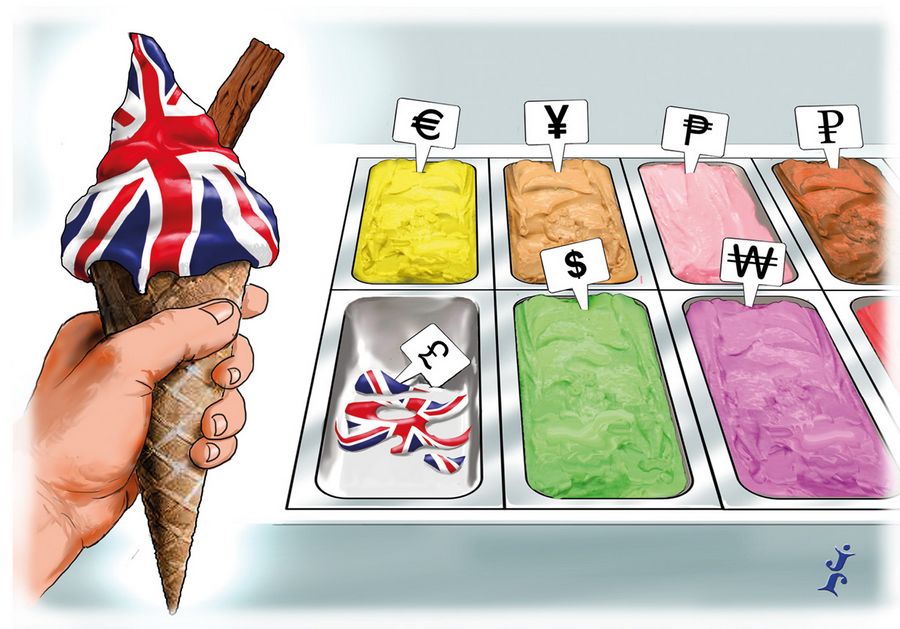Strategic choice
While no market was immune to the volatility caused by geopolitical events in 2022, the sterling sector seemed to take it upon itself to add some domestically inspired instability for good measure. It took a bank with a wide-ranging understanding across currencies to choose how and when to best access the market. Barclays is IFR’s Sterling Bond House of the Year.

The key to being a market leader in any given sector is often not being wedded to a given outcome no matter the circumstances. Such is the case with Barclays and its prowess in the sterling arena. While it is undoubtedly at the forefront of arranging bond issuance in the currency, it has many others strings to its bow.
It is the top-ranked non-domestic house in the US dollar market and the top-ranked UK house in euros, so is in no way inclined only to suggest sterling when it comes to currency options. Even so, as befits a UK-domiciled institution, it also sits at the top table of sterling issuance.
Such all-round capabilities set it apart from a number of its competitors. In a funding year that was anything but straightforward, this also provided clients with confidence that the advice they received was in their best interests and tailor-made for the current circumstances, while also with an eye to how the environment might change.
“You needed a plan – a good plan – but you needed a plan B and a plan C as well,” said Lee Cumbes, head of EMEA debt capital markets.
It took a steady hand to guide issuers through a sterling market which was at the mercy of both international events and just plain domestic political upheaval that at times looked to have shut the sector completely.
“People had been conditioned by recent experience, so some were not worried, not appreciating the full risk,” said Peter Mason, co-head of capital markets for EMEA.
This was aptly demonstrated in November when Barclays led a deal for Northumbrian Water which coincided almost exactly with the resignation of then Prime Minister, Liz Truss, whose tenure had been characterised by volatility and uncertainty.
There had not been a corporate deal in the sterling market since she became leader some six weeks before, when Orsted sold £950m across two tranches in a multi-currency offering. That deal, which was the year’s largest in the asset class in sterling, was also led by Barclays.
Northumbrian’s reopening prefaced a flurry of activity over the following six weeks that had looked unlikely, with more than 30 transactions across asset classes. Barclays led more of them than any other bank.
And this was not the only time it had had a hand in reopening the corporate market. It did so in May with a deal for McDonald’s following a month-long hiatus as recessionary and stagflation fears emerged, and again in June after hawkish central bank noises cowed borrowers.
“Decisions mattered, intelligence mattered, execution mattered,” said Cumbes, of what was required throughout a year that saw Barclays cover a number of areas, such as international supply (PepsiCo), long-end deals (Northern Powergrid), complex situations (AA), ESG (Severn Trent), debuts (Associated British Foods) and M&A (Haleon), among others.
In addition to its obvious corporate capabilities, Barclays was also at the forefront of the financials sector, nowhere more so than in the realm of capital securities.
A managed non-call and exchange of old Additional Tier 1 notes for new ones for Shawbrook demonstrated its more niche domestic proficiency, while Zurich Insurance’s first subordinated sterling transaction in almost 20 years, a £1bn Tier 2, spoke to its international credentials.
Add to that AT1 paper from Virgin Money and rarer Restricted Tier 1s from Aviva and Utmost, and a leading franchise begins to reveal itself.
Neither was the senior side of the equation neglected, with deals for BPCE, CaixaBank, Wells Fargo and CIBC displaying a wide geographical footprint, while the insurance sector was represented by the likes of New York Life and MetLife. Covered bonds, too, were well represented, with domestic and Canadian credits providing the mainstay of supply.
But it was the public sector arena that produced perhaps the year’s most contentious issue, the UK DMO’s £4.5bn 2053 green Gilt tap, and Barclays was again front and centre of proceedings.
The bank acted as duration manager and, as such, was most exposed to the volatility that shrouded the execution. “Duration manager is a proper risk management role,” said Cumbes. “You own the risk". He pointed out that Barclays was also involved in the DMO’s very next syndication, two deals in a row being “somewhat unusual”.
While the rest of its SSA issuance was more run-of-the-mill, featuring perennial visitors such as KfW, Rentenbank, ADB and the World Bank, there were a couple of notable deals. Jersey, for example, came to market for the first time in eight years, while Saxony-Anhalt made its debut in sterling.
To see the digital version of this report, please click here
To purchase printed copies or a PDF of this report, please email leonie.welss@lseg.com





